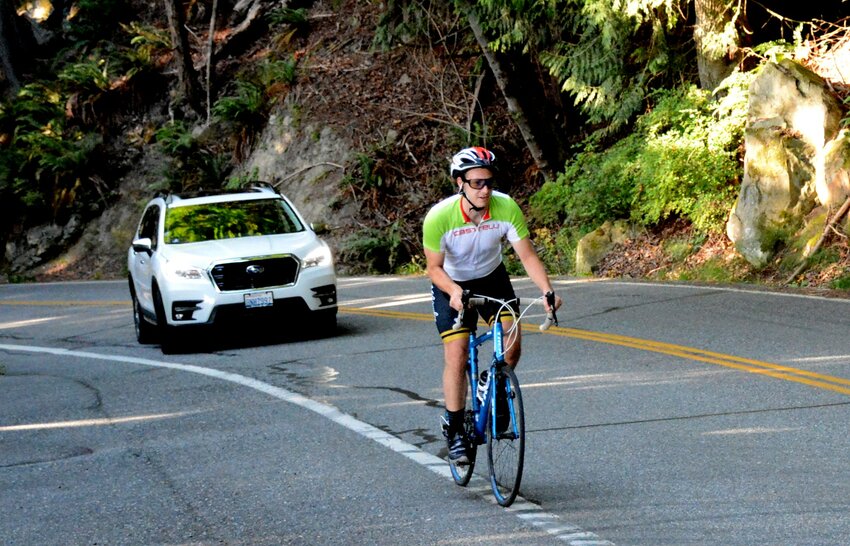 Ian Haupt photo
Ian Haupt photoQ: I have had some vigorous discussions about bike etiquette with my die-hard biking friends. My question is about RCW 46.61.770 "Riding on roadways and bicycle paths." Section (1) says ride as far to the right as possible if traffic is going faster than the cyclist, and Section (5) says riders may ride no more than two abreast. This seems contradictory to Section (1) for the rider to the left when two are abreast. Can riders ride two abreast on a county highway?
A: Can two opposing ideas both be true? Philosophers and scientists have debated this question; Einstein theorized that it’s a fundamental structure of the universe. But that’s about as far as I go with quantum physics, so let’s start with a look at the law.
Yes, the law allows cyclists to ride two abreast on the road. Actually, if we want to get technical about it, the law sets a limit, stating, “Persons riding bicycles on a roadway shall not ride more than two abreast.”
And yes, the same law states “every person operating a bicycle on the roadway at a rate of speed less than the normal flow of traffic shall ride as near to the right side of the right through lane as is safe.” I would like to point out that in your question you wrote “ride as far to the right as possible.” The law requires cyclists to ride as far to the right “as is safe.” Sometimes it might be the same thing, but often it’s not. The law isn’t asking cyclists to put themselves at risk with their lane position; quite the opposite.
So when can you ride side-by-side? Clearly, it’s fine for the speedy riders who can ride with the normal flow of traffic (which is probably only the fastest riders on roads with our slowest speed limits). I’d argue that it’s okay to ride side-by-side when there’s no traffic (how can there be a normal flow of traffic if there’s no traffic?). You can also ride two abreast on the shoulder, if it’s wide enough, as the definition of “roadway” in the law excludes the shoulder.
As to whether you can always ride two abreast, I’ll concede that the law does seem a bit contradictory (or at least unclear). However, I can think of a few situations where, even in traffic, riding side-by-side might be the safer (and thus, legal) choice. For example, an adult riding with a younger rider might stay side-by-side to make sure a driver doesn’t pass too close to a less experienced (and less stable) rider.
Staying two abreast might increase visibility for drivers, so they have more time to see and respond to bikes on the road. On some roads there isn’t room to pass a cyclist within the lane, so moving from two abreast to single file might send the wrong message to drivers that the cyclists want them to pass. And on roads with short windows to pass safely, going around pairs of bikes is quicker for drivers than passing a string of them in single file.
There are also situations where riding side-by-side would be the unsafe choice, and even if you interpreted the law as always allowing riding two abreast, it’d be the wrong decision from a safety perspective. High speed-limit roads with limited sight distances immediately come to mind.
Whether riding alone, single file, or side-by-side, cyclists can (and should) choose a lane position that is as far to the right as is safe. And sometimes that might not be on the far right side of the road.
Doug Dahl is a manager with the Washington Traffic Safety Commission, Region 11 and publishes TheWiseDrive.com.